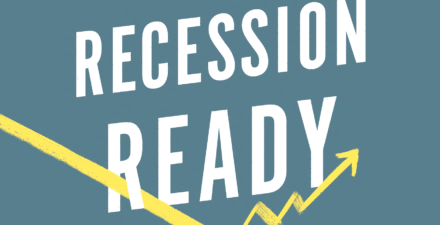Policies to strengthen our nation’s Supplemental Nutrition Assistance Program

This essay is part of Vision 2020: Evidence for a stronger economy, a compilation of 21 essays presenting innovative, evidence-based, and concrete ideas to shape the 2020 policy debate. The authors in the new book include preeminent economists, political scientists, and sociologists who use cutting-edge research methods to answer some of the thorniest economic questions facing policymakers today.
To read more about the Vision 2020 book and download the full collection of essays, click here.
Overview
Our nation’s Supplemental Nutrition Assistance Program, previously known as food stamps, is a central element of the U.S. social safety net. SNAP is the nation’s primary food support program, providing electronic vouchers that can be used to purchase most foods at participating retail outlets and helping low-income families afford the food that they need.
SNAP reaches a broad range of low-income individuals, including the elderly, disabled, families with children, workers, and the unemployed. During a typical month in 2018, the program helped 40 million people—about 1 out of every 8 Americans—afford the food they need. SNAP is means tested, and eligibility for the program requires that net household income (equal to total income less allowable deductions) be no higher than 100 percent of the poverty line, or about $1,780 per month for a family of three. This benefit is designed to supplement out-of-pocket spending on food, and benefits average about $4 per person per day. The result of this targeting is one of the most important anti-poverty programs in the United States.
A recent National Academy of Sciences report on child poverty finds that the elimination of the program would raise the child poverty rate from 13 percent to 18.2 percent. Only two federal refundable tax credits—the Earned Income Tax Credit and the refundable portion of the Child Tax Credit—are more successful at alleviating child poverty. Further, the report found that this supplemental nutrition assistance is the most effective program at reducing deep child poverty (income below 50 percent of the poverty line). Eliminating it would raise deep child poverty from 2.9 percent to an estimated 5.7 percent.
SNAP caseloads can quickly respond to increased need—for example, during economic downturns or natural disasters—and benefits are quickly spent, generally in the recipient’s community, which also stimulates the local economy. This program increases households’ spending on food, reduces recipients’ likelihood of experiencing food insecurity, and improves economic and health outcomes.1
A key priority of the next US. Congress and administration in 2021 should be to preserve this important program and to enact policies that enhance its impacts on the macroeconomy and on children. This essay examines currently proposed changes to key policy components of the Supplemental Nutrition Assistance Program—its broad-based eligibility category, its “public charge” criteria for legal immigrants, and conditions under which work requirements are waived—and then offers ways to strengthen the program’s ability to protect young children by increasing SNAP benefits to their families, as well as enhance its recession-fighting power.
Preserve work supports built into the Supplemental Nutrition Assistance Program
An increasing share of SNAP participants are low-wage working families, reflecting our nation’s recent shift toward a work-based safety net for those who are not elderly. Today, about 80 percent of the federal safety net spending on families with children goes to working families, compared to about a third in 1990.2 Per-child spending directed to nonworking families decreased in real terms by 20 percent over this period.3
But two recent policy changes by the Trump administration make it harder for many working families to receive SNAP benefits. First, the administration proposes to eliminate the program’s broad-based category eligibility, which allows families with total incomes above 130 percent of poverty to participate if they have certain characteristics, such as high expenses for housing or childcare, or if the earned-income deduction in the SNAP formula gives them eligibility (they must still meet the net income test whereby net income is below 100 percent of the poverty line). The overwhelming majority of benefits paid under this broad-based eligibility go to households with total incomes between 131 percent and 150 percent of the poverty line. This category also allows the program itself to be more efficient by waiving the requirement to collect detailed information on a household’s assets. Most SNAP participants have no or very low levels of assets, and documenting this for every case is costly to families that must provide documentation, as well as states that must collect it.
Families that include employed, elderly, or disabled family members are disproportionately represented among families receiving supplemental nutrition assistance through the broad-based category eligibility. The Trump administration’s proposed elimination of broad-based eligibility introduces a sharp cliff in benefits that may act to discourage these SNAP participants from working, which would hurt working families. States’ option to adopt broad-based category eligibility should be reinstated.
Second, the Trump administration has proposed changes to the public charge rule, a long-standing administrative rule that determines whether to confer citizenship to an immigrant, with one factor for consideration being whether the applicant is likely to become a “public charge” of the state. Recently, the Trump administration announced a change to the interpretation of this public charge rule, which will make it difficult for members of families of documented immigrants who receive SNAP benefits to obtain citizenship. This rule provides strong incentives for documented immigrants who are eligible for supplemental nutrition assistance to not participate in the program and other safety net benefit programs. Immigrant households make up a small share (only 6 percent) of the total SNAP caseload, yet the program provides an important source of supplemental food benefits to these families, many of which also include U.S. citizen children. Households that tap nutrition assistance often have immigrant members who are more likely to be employed than U.S. citizens who avail themselves of the program.
Removing documented immigrant families from the Supplemental Nutrition Assistance Program will cause harm to these families and to their local economies, as we note below. This proposed “public charge” categorization is grossly out of line with the modern realities of SNAP and related social safety net programs. Today, a large share of social benefits spending goes to support working families who need an extra boost to afford the food and medical care that they need, due to market realities such as stagnant wages and instability in employment and hours. The radical reforms proposed by the Trump administration that define anyone who is likely to use even modest amounts of SNAP benefits temporarily as a “public charge” should be rejected.
Supplemental nutrition assistance helps stimulate the economy
SNAP is an effective “automatic stabilizer” that responds quickly at times, in places, and for individuals experiencing the effects of periodic economic downturns.4 At the depths of the Great Recession of 2007–2009, 15 percent of Americans received benefits from the program. At the time, Congress authorized a temporary increase in maximum benefits, which was a very effective fiscal stimulus—every dollar in new SNAP benefits during this period was estimated to spur $1.74 in economic activity.5 We have elsewhere argued in more detail that temporary reforms to SNAP during the Great Recession were highly effective at increasing family well-being and fiscal stimulus.6
Learning from this experience, the next Congress and administration should implement two automatic-stabilizer reforms that would automatically kick in when an economic downturn occurs. Both would be triggered when the national unemployment rate rises at least 0.5 percentage points above its low in the prior 12 months, according to the so-called Sahm rule, developed by Claudia Sahm, former chief of the Consumer and Community Development Research Section at the Federal Reserve in Washington, D.C.7 (Sahm is now Director of Macroeconomic Policy at Equitable Growth.) First, maximum SNAP benefits should be automatically increased by 15 percent. Second, existing SNAP work requirements would automatically be waived by the U.S. Department of Agriculture when the Sahm rule indicates that a recession has begun. Automatic waivers at the beginning of a recession will quickly help alleviate hardship and stimulate the economy without costly delays. Note that this stands in contrast to the Trump Administration’s recent final rule on work requirement waivers to SNAP, which makes it more difficult for areas to qualify for waivers even when unemployment is increasing.8
Strengthen the protection of young children and intergenerational benefits
An increasing base of evidence demonstrates that children’s access to adequate resources in early life improves later-life health and economic outcomes.9 In particular, research by the two authors of this essay and another colleague used a variation in the original introduction of SNAP across counties to estimate the impact of having access to the program from conception through age 5.10 We found that access to food stamps before age 5 leads to large and statistically significant reductions in the subsequent adult incidence of “metabolic syndrome” (obesity, high blood pressure, heart disease, diabetes).
In addition, our research found that access to food stamps in early childhood for women (but not for men) leads to an increase in economic self-sufficiency. Our measure included current earnings and family income, and indicator variables for whether the individual graduated from high school, is currently employed, is currently not living in poverty, and is not participating in the Temporary Assistance for Needy Families program or SNAP. The effects were largest among those children who had access at the youngest ages and among those who spent their childhoods in the most disadvantaged counties.
More recent research extends our work and finds that early life access to SNAP benefits leads to improvements in long-term earnings and education, reductions in mortality, as well as a reduction in incarceration among black men.11 And other research finds that access to the program between conception and age 5 improves the child’s parent-reported health in later childhood, measured at ages 6 to 16 (with suggestive evidence of reductions in school days missed, doctors’ visits, and hospitalizations at ages 6 to 16).12
Despite the evidence on the importance of resources during early childhood, young children in the United States face high rates of poverty: 13 percent of children overall, 18 percent of black children, and 22 percent of Hispanic children live in families with income below the poverty line.13 Some straightforward changes to SNAP would yield a double dividend by reducing poverty for families with young children and improving the children’s life trajectories.
To address the unmet needs of families with young children, we propose introducing a “young child multiplier” that would increase maximum SNAP benefits by 20 percent for households with children between ages 0 and 5. For any family with a qualifying child in the household, the maximum benefit will be multiplied by 1.2, then the family’s benefits would be calculated according to the standard benefit formula for deductions and net income calculations.
Although SNAP is a universal program with no additional targeting besides income and asset criteria, it nonetheless serves a large number of young children and would be an effective lever for increasing resources in families with young children. As of 2017, more than one in five households receiving these benefits has a young child (aged 0 to 5), and 12.9 percent of all individuals receiving these benefits are young children. Of the $60.6 billion spent by the federal government to provide SNAP benefits in 2018, about $24 billion (40 percent of the total) went to families with young children.
A strength of the Supplemental Nutrition Assistance Program, compared to other programs such as the Earned income Tax Credit, is that SNAP benefits are paid monthly and can be incorporated into a household’s regular expenses on an ongoing basis. We estimate the annual cost of the young child multiplier to be $6.5 billion. This would serve as a supplement to the current Women, Infants and Children, or WIC, social benefit program that already targets low-income families with young children. Paying additional benefits through the Supplemental Nutrition Assistance Program would be more efficient and effective than expanding WIC for several reasons. First, SNAP benefits are more flexible than WIC benefits and are expected to have a stronger protective effect on other aspects of a family’s financial well-being. Furthermore, the WIC program is hampered by low participation rates among families with children—the participation rate drops from 35 percent of 1-year-olds to only 15 percent of 4-year-olds, while SNAP participation rates are relatively high, estimated at 85 percent in 201614 and steady across these ages.15
Continue the progress of increasing take-up rates for SNAP benefits
Like any safety net program, for SNAP to be effective, it must reach those who need it. Participation rates have been steadily increasing in recent years, up from a low of 53 percent in 2001. Despite this progress, high take-up rates are not universal. There is substantial variation in take-up rates across states—from 72 percent in California and 73 percent in Texas, to near 100 percent in Illinois, Oregon, and Michigan.16 Participation rates are lower for the elderly and for those with lower expected benefit levels, such as eligible households with income above the poverty threshold.
Recent work shows that providing information on eligibility or information plus application assistance can meaningfully increase these rates for the elderly.17 Other work shows that regular recertification periods contribute to incomplete take-up.18 Overall, we need more experimentation and attention to maintaining and increasing SNAP participation.
Download FilePolicies to strengthen our nation’s Supplemental Nutrition Assistance Program
Conclusion
The Supplemental Nutrition Assistance Program has been effective and efficient, providing food benefits to a wide range of needy individuals and families that, in turn, purchase the foods they desire from local food retailers. The next Congress and administration should repair the damage done to the program by recent rulemaking in the Trump era, reversing the rule changes for eligibility and public charge determinations for legal immigrants, and preserving the ability to appropriately waive work requirements during economic downturns. And policymakers should strengthen the program’s ability to protect young children by increasing SNAP benefits to their families, as well as enhance its recession-fighting power. Each proposal would be a well-targeted incremental reform that would strengthen the program to better serve U.S. families.
—Hilary Hoynes is the Haas Distinguished Chair in Economic Disparities at the Richard and Rhoda Goldman School of Public Policy at the University of California, Berkeley. Diane Whitmore Schanzenbach is the Margaret Walker Alexander Professor of Education and Social Policy at Northwestern University, where she also directs the Institute for Policy Research.
End Notes
1. Janet Currie, “US Food and Nutrition Programs.” In Robert A. Moffitt, ed., Means-Tested Transfer Programs in the United States (Chicago: University of Chicago Press, 2013), pp. 199– 289; Hilary Hoynes and Diane Whitmore Schanzenbach, “US food and nutrition programs.” In Robert A. Moffitt, ed., Economics of Means-Tested Transfer Programs in the United States, vol. 1 (Chicago: University of Chicago Press, 2016), pp. 219–301.
2. The programs covered in this calculation include the Supplemental Nutrition Assistance Program, the Temporary Assistance for Needy Families program and its predecessor, the Aid to Families with Dependent Children program, the Earned Income Tax Credit, and the Child Tax Credit. Spending via the AFDC includes federal and state spending, and spending on TANF includes the federal block grant to states.
3. Hilary Hoynes and Diane Whitmore Schanzenbach, “Safety Net Investments in Children” (Washington: The Brookings Institution, 2018).
4. Alan S. Blinder and Mark Zandi, “The financial crisis: Lessons for the next one” (Washington: Center on Budget and Policy Priorities, 2015); Brynne Keith-Jennings and Dottie Rosenbaum, “SNAP Benefit Boost in 2009 Recovery Act Provided Economic Stimulus and Reduced Hardship” (Washington: Center on Budget and Policy Priorities, 2015).
5. Blinder and Zandi, “The financial crisis: Lessons for the next one.”
6. Hilary Hoynes and Diane Whitmore Schanzenbach, “Strengthening SNAP as an Automatic Stabilizer” (Washington: The Hamilton Project, 2018).
7. Claudia Sahm, “Direct Stimulus Payments to Individuals” (Washington: The Hamilton Project, 2019).
8. Lauren Bauer, Jana Parsons and Jay Shambaugh, “New SNAP Rule Change Just Made It Harder to Combat Future Recessions,” Washington: The Hamilton Project 2019), available at https://www.brookings.edu/blog/up-front/2019/12/04/new-snap-rule-change-just-made-it-harder-to-combat-future-recessions/.
9. Douglas Almond, Janet Currie, and Valentina Duque, “Childhood Circumstances and Adult Outcomes: Act II,” Journal of Economic Literature 56 (4) (2018): 1360–1446; Hoynes and Schanzenbach, “Safety Net Investments in Children.”
10. Hilary Hoynes, Diane Whitmore Schanzenbach, and Douglas Almond, “Long-run impacts of childhood access to the safety net,” American Economic Review 106 (4) (2016): 903–34.
11. Martha Bailey and others, “Is the Social Safety Net a Long-Term Investment? Large-Scale Evidence from the Food Stamps Program.” Working Paper (Goldman School of Public Policy, 2019).
12. Chloe N. East, “The Effect of Food Stamps on Children’s Health: Evidence from Immigrants’ Changing Eligibility,” Journal of Human Resources (2018).
13. National Academies of Sciences, Engineering, and Medicine, “A Roadmap to Reducing Child Poverty” (2019).
14. U.S. Department of Agriculture, “Reaching Those in Need: Estimates of State Supplemental Nutrition Assistance Program Participation Rates in FY 2016” (2019).
15. Diane Whitmore Schanzenbach and Betsy Thorn, “Food Support Programs and their Impacts on Very Young Children,” Health Affairs (2019).
16. U.S. Department of Agriculture, “Reaching Those in Need: Estimates of State Supplemental Nutrition Assistance Program Participation Rates in FY 2016.”
17. Amy Finkelstein and Matthew J. Notowidigdo, “Take-up and Targeting: Experimental Evidence from SNAP.” Working Paper 24652 (National Bureau of Economic Research, 2018).
18. Tatiana Homonoff and James Somerville, “Program Recertification Costs: Evidence from SNAP.” Working Paper (2019).







